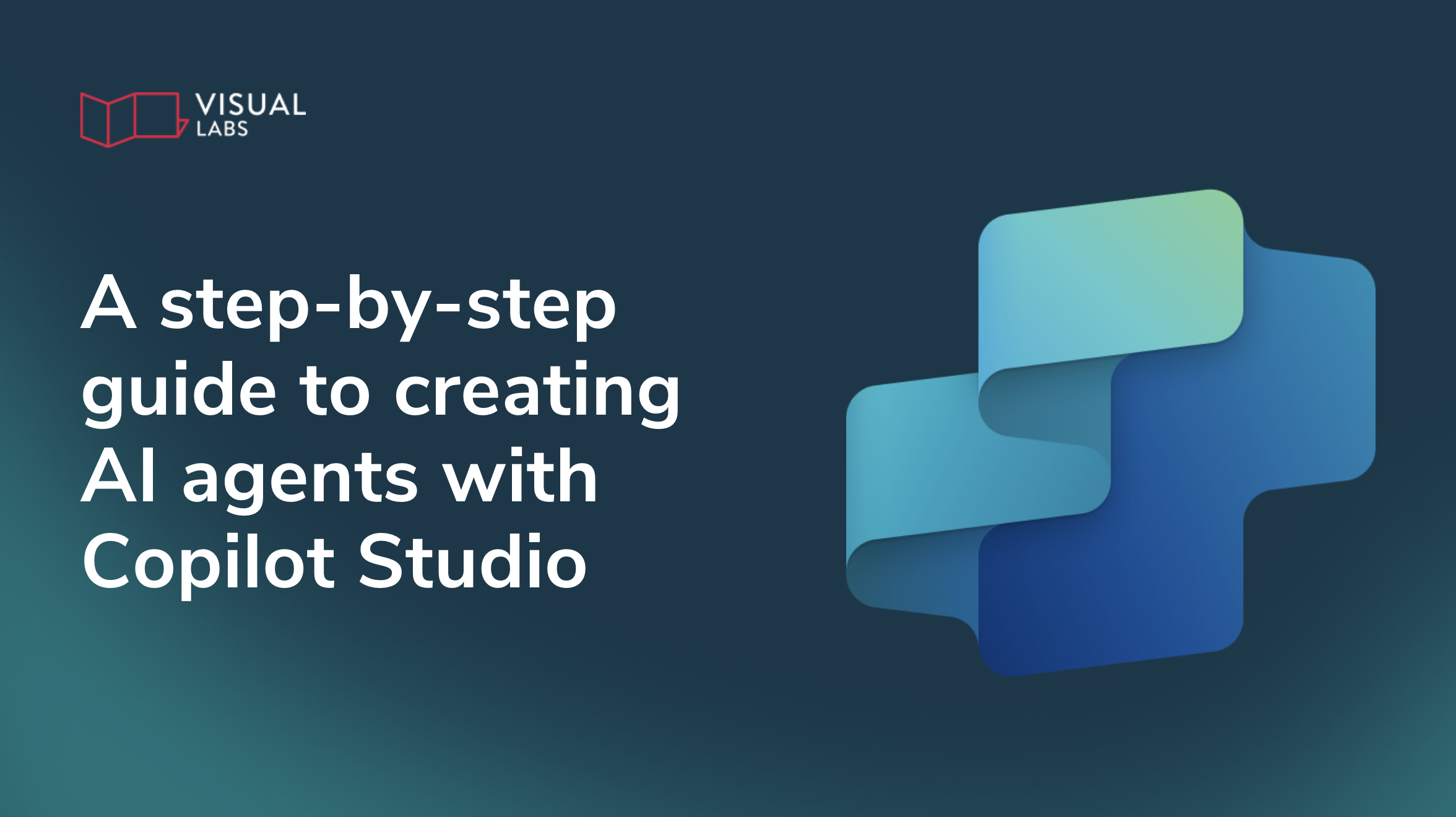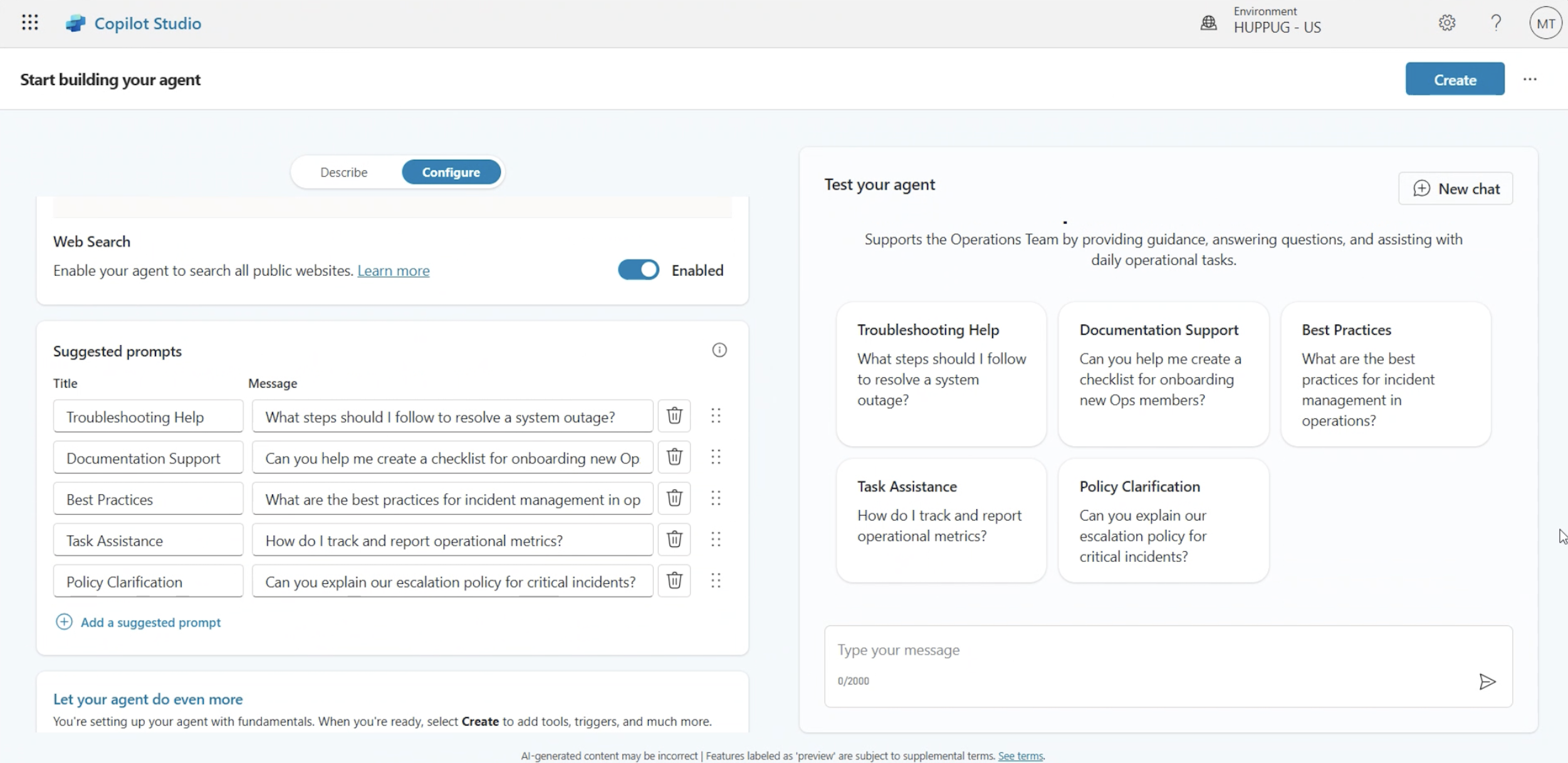How can I build, deploy, and share custom AI agents with Copilot Studio?

TL;DR
Copilot Studio makes it possible for IT Ops and business teams to create custom AI agents that can answer questions, run processes, and even automate workflows across Microsoft 365. We recommend a structured approach: define the use case, create the agent, set knowledge sources, add tools and actions, then shape its topics and triggers. But before you dive into building, check your data quality, define a clear purpose, and configure the right policies.
Before you start setting anything up, stop
It’s tempting to open Copilot Studio and start dragging in tools, uploading files, and typing instructions. But an agent without a plan is just noise.
- Get your data in order first. Bad data means bad answers, and no amount of clever configuration can save it.
- Define the “why” before the “how.” Build around a specific use case. For example, sales support, finance queries, service troubleshooting.
- Don’t build for the sake of building. Just because you can spin up a chatbot doesn’t mean you should. The best agents are purposeful, not experimental toys.
Think of your agent as a new team member. Would you hire someone without a role description? Exactly.
Building your first Copilot: practical steps
Once you know the “why”, here’s how to get your first custom agent working.
1. Author clear instructions
Clear instructions are the foundation of your agent. Keep them simple, unambiguous, and aligned to the tools and data you’ve connected. Microsoft even provides guidance on how to write effective instructions.
2. Configure your agent
- Content moderation: In the Agent → Generative AI menu, set rules for what your Copilot should (and shouldn’t) say. For example, if it can’t answer “XY”, define a safer fallback response.
- Knowledge sources: You can upload multiple knowledge sources, or add trusted public websites so the agent uses those instead of a blind web search.
- Add tools: Agents/Tools/Add a tool lets you extend functionality. For instance, connect a Meeting Management MCP server so your Copilot inherits scheduling skills without rebuilding them.
You’re not just configuring settings — you’re composing a system that reflects how your organisation works.

3. Validate your agent’s behaviour
As of now, there’s no automated testing of agents, but that doesn’t mean you should skip this step. You can manually test your agent as the author. The Copilot Studio test panel allows you to simulate conversations, trace which topics and nodes are activated, and identify unexpected behaviours. The panel is there to help you spot gaps, so take the time to run realistic scenarios before publishing.
4. Pick the right model
Copilot Studio now offers GPT-5 Auto (Experimental) alongside GPT-4.0 (default). The experimental model can feel sharper, but it may not reliably follow instructions. If stability matters more than novelty — and for most IT Ops rollouts it does — stick with 4.0 until you’re confident.
(As of 15th October, 2025. Note that model availability and behaviour may change over time).
The difference between noise and value
Rolling out a custom agent isn’t about dropping a chatbot into Teams. Done right, it’s about embedding AI into workflows where it drives real value — answering finance queries with authority, guiding service agents through processes, or combining AI with agent flows for end-to-end automation.
The difference between a useless bot and a trusted agent is preparation. Build with intent, configure with care, and test until you're sure it works properly.
You wouldn’t give a new hire access to your systems without training, policies, and supervision. Treat your AI agents the same way.
Need help automating workflows with Copilot Studio? Get in touch with our experts to discuss your use case.
Blog posts

Copilot Studio without the risk: The IT ops’ guide to AI governance
Heading 1
Heading 2
Heading 3
Heading 4
Heading 5
Heading 6
Lorem ipsum dolor sit amet, consectetur adipiscing elit, sed do eiusmod tempor incididunt ut labore et dolore magna aliqua. Ut enim ad minim veniam, quis nostrud exercitation ullamco laboris nisi ut aliquip ex ea commodo consequat. Duis aute irure dolor in reprehenderit in voluptate velit esse cillum dolore eu fugiat nulla pariatur.
Block quote
Ordered list
- Item 1
- Item 2
- Item 3
Unordered list
- Item A
- Item B
- Item C
Bold text
Emphasis
Superscript
Subscript

How to build, deploy, and share custom AI agents with Copilot Studio
Heading 1
Heading 2
Heading 3
Heading 4
Heading 5
Heading 6
Lorem ipsum dolor sit amet, consectetur adipiscing elit, sed do eiusmod tempor incididunt ut labore et dolore magna aliqua. Ut enim ad minim veniam, quis nostrud exercitation ullamco laboris nisi ut aliquip ex ea commodo consequat. Duis aute irure dolor in reprehenderit in voluptate velit esse cillum dolore eu fugiat nulla pariatur.
Block quote
Ordered list
- Item 1
- Item 2
- Item 3
Unordered list
- Item A
- Item B
- Item C
Bold text
Emphasis
Superscript
Subscript
Ready to talk about your use cases?
Request your free audit by filling out this form. Our team will get back to you to discuss how we can support you.


